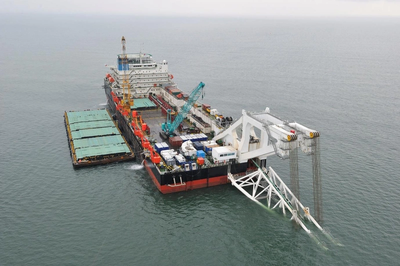Maritime Inspection Made Easy Using Digital Devices
A rigorous marine inspection system is vital for companies operating in Australian and Asian waters. The safety of vessels, maritime equipment and employees all depend on ongoing maintenance, following regulations and effective management. For organizations and firms with assets, equipment and staff working at sea, the need for high-end successful monitoring of conditions is a 24-hour, 365-day job. The industry leaders in oil and gas, tourism, defense and shipping are choosing to implement paperless inspection applications that also form part of a computerized maintenance management ecosystem. Today the need for instant information has skyrocketed; compliance and governmental regulations imposing tighter deadlines and setting higher performance thresholds. For organizations with multiple assets or equipment spread over distances at sea, the best solutions have proven to be digital inspection and paperless management systems.
Moving from pen and paper to an application on a mobile device has shown many benefits to numerous fields. Organizations are taking advantage of all the latest features of a smartphone or tablet such as the camera, GPS timestamps and standardized response checklists. Small ergonomically improvements to the inspection officers work can lead to saved time and better data. Accurate information can be recorded leaving no error in judgement and thereafter saved for future use as reference material. Any manuals, history records and industry guidelines can often be attached to specific checklist parts, meaning field officers don’t have to bring an entire library as well as their multi-page inspection checklist anymore; everything’s compressed into a smartphone or tablet.
Perhaps the best and most advantageous function for maritime organizations that becomes available in switching to digital inspection solutions is the synching possibilities. Every inspection device can be used offline and then synched with the back-end data processing system. Every inspection, maintenance request and audit check is recorded, processed and put into the dynamic number-crunching back-end for a clear audit trail and informative report for management. Access to results can even be given to remote third parties and other stakeholders for compliance or client needs.
Some examples of paperless audits, inspection and compliance key for maritime organizations:
- Navigational audits
- Vessel condition surveys
- Vetting and fleet compliance
- Common marine inspection documents
- Equipment/staff audits
- Crew voyage checklist
- Safety and OHS compliance
- Permits
- Annual audits
- Marine inspection for workboats
- Pre-start checks
- Inductions
- Relevant regulations (e.g. Australian tourism regulations, etc.)
For maritime organizations, inspections don’t have to be a story of paperwork flying back and forth, out to sea, getting lost and reissued to many times to count. To ensure a full assessment of navigational performance is always on hand, and to improve both inspection accuracy and industry compliance, paperless inspection is the best course.

The Author: Karl Ahlgren is Marketing Manager at Pervidi.















